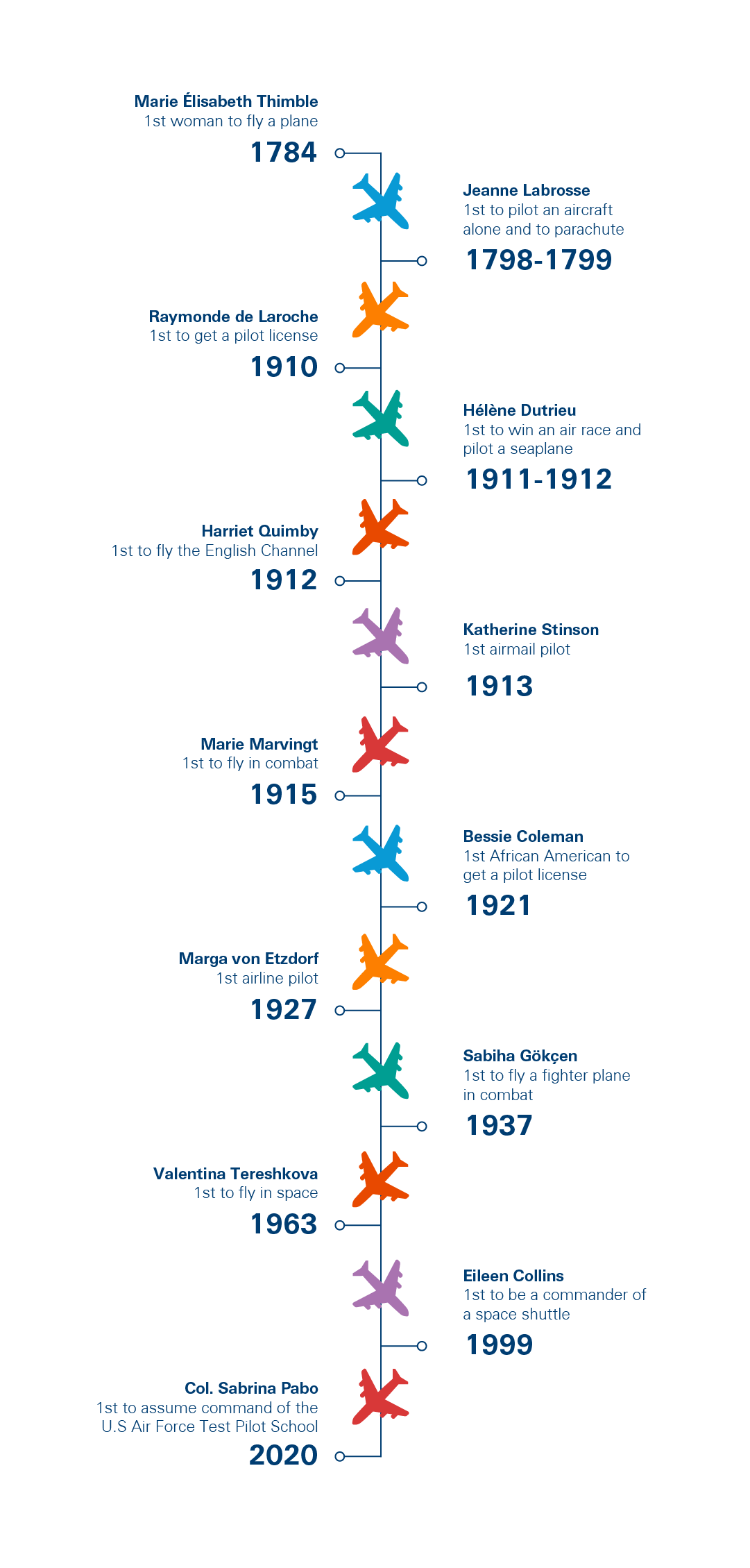A Historical Glance at Women in Aviation
Women pilots continue to break barriers, reach new heights, and advance the industry forward. But to better understand the present, we must dive deep into the past.
The history of aviation and space is full of remarkable and courageous womenx who have advanced human rights and transported us to the skies. From Bessie Coleman, the first African-American ever to receive an international pilot’s license during WWI, to Harriet Quimby, the first licensed woman pilot in the U.S and first to fly the English Channel, to Bernice Haydu, who was the first woman ever to fly military planes.

“The single most compelling thing is that the world should enthusiastically embrace the fact that women are inextricably woven throughout the fabric of global aviation – the industry has evolved and flourished in large part due to the contributions of women,” stated Dolores Martin, Division Director, Management and Business Services at the US FAA.
Even though numerous women are not mentioned in the timeline above, it is safe to say that women have played an enormous role in moving the aviation industry forward and will continue to do so. Though women have flown since the early 1900s, it was incredibly difficult for them due to various restrictions. It wasn’t until the 1970s that these restrictions finally lessened, and women could work in the military, cockpits, NASA and their space shuttles, and planes. Here are a few of the most influential women in the industry.
Emma Lilian Todd
Originally a well-known inventor, in 1906, Todd designed her first airplane and presented the model to the public. She received funding and began working on her plane consecutively, opening the Junior Aero Club to support womenx aviators.
Harriet Quimby
Quimby was the first woman pilot in the U.S. while also being a journalist. Her love for aviation led her to be taught by Alfred Moisant (brother of the King of Aviators, John Moisant) in secret. She was then given the pilot license, and in less than a year, she became the first woman to cross the challenging Channel from Dover to Equine.
Jannette Piccard
Piccard became the first woman licensed to pilot a balloon, helping to evolve aerospace alongside her husband. The couple created a balloon with a pressurized cabin named Century of Progress. Jannette piloted the balloon and reached over 17.5 meters in altitude, thus making her the first woman to enter the stratosphere.
Amelia Earhart
Amelia needs no introduction, with her name at the center of many legends. She broke her first record by reaching 4,300 feet in her yellow Kinner Airstar biplane (with the sweet name Canary). Not to mention numerous broken records, such as being the first woman to cross the Atlantic alone and the first to fly around the world. On July 2, 1937, Earhart disappeared without a trace or explanation when trying to reach Howland Island.
Martha McSally
McSally was the first female fighter pilot to be in combat. At the young age of 18 years old, Martha began her military career as a trainer and then as a fighter pilot once the U.S congress repealed their prohibition laws against women. Together with her A-10 Thunderbolt II, they flew in Kuwait and southern Iraq. In 2001, she fought for servicewomen in Saudi Arabia and their right to cover or not cover themselves when off base, which she won. Lastly, in 2019, she fought against the military while serving as a Senator in Arizona and spoke against rape/sexual abuse in the service.
The now
According to Women in Aviation: “During the last two decades, the number of women involved in the aviation industry has steadily increased, and women can be found in nearly every aviation occupation today. However, the numbers are small by comparison. Women pilots, for example, represent only six percent of the total pilot population.” Today, there are over 691,691 pilots, with only 8.4% being women, as stated by the FAA.

History shows that women have led the way in aviation and helped open the doors for future generations of female pilots. With the support of various mentor programs, scholarships, and laws supporting women in the workforce, the future for women in aviation has never been brighter.